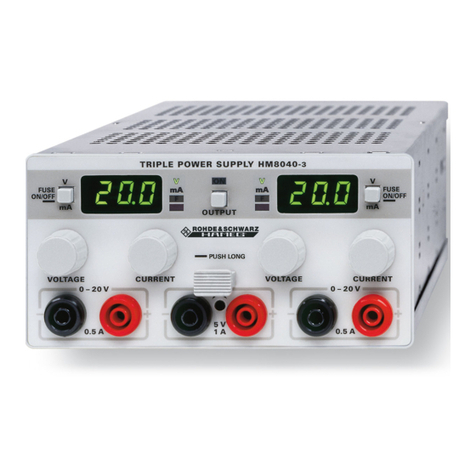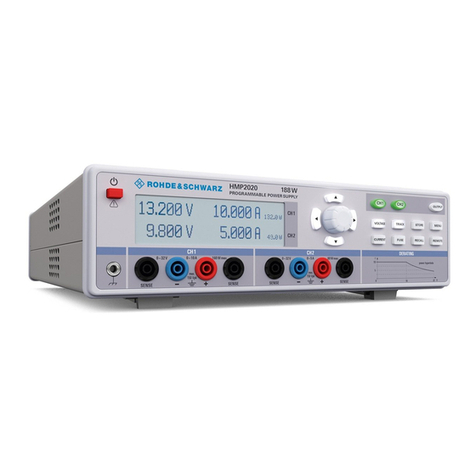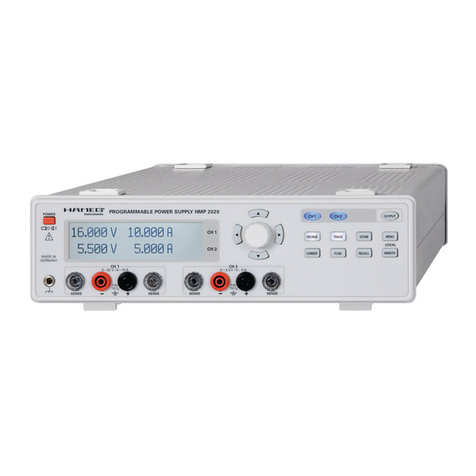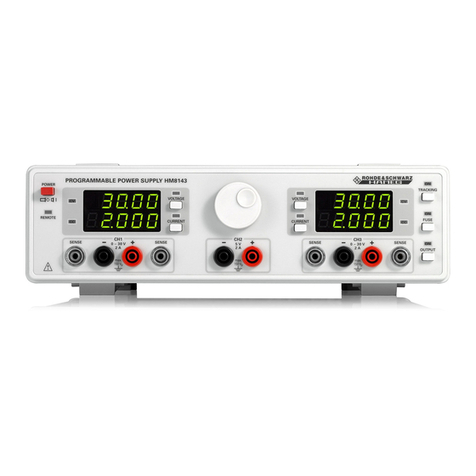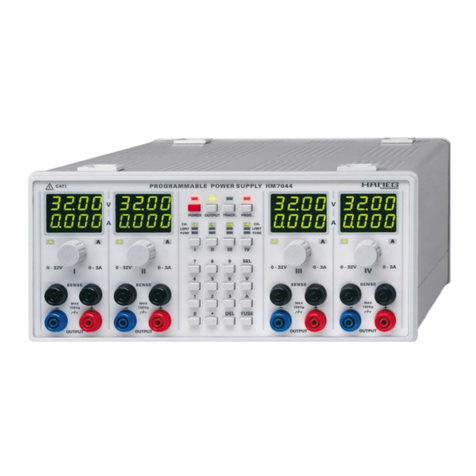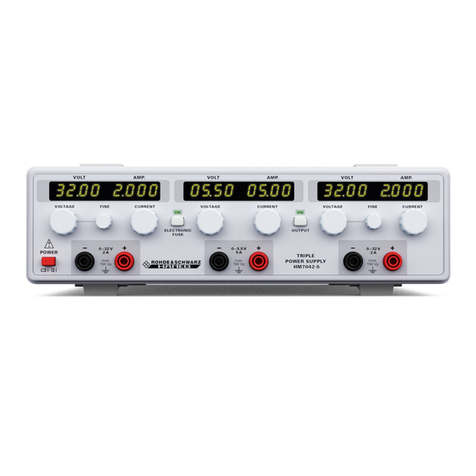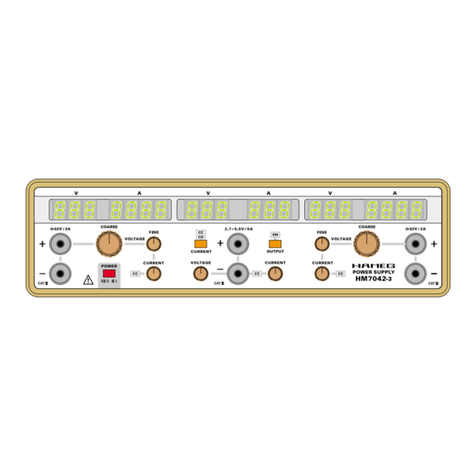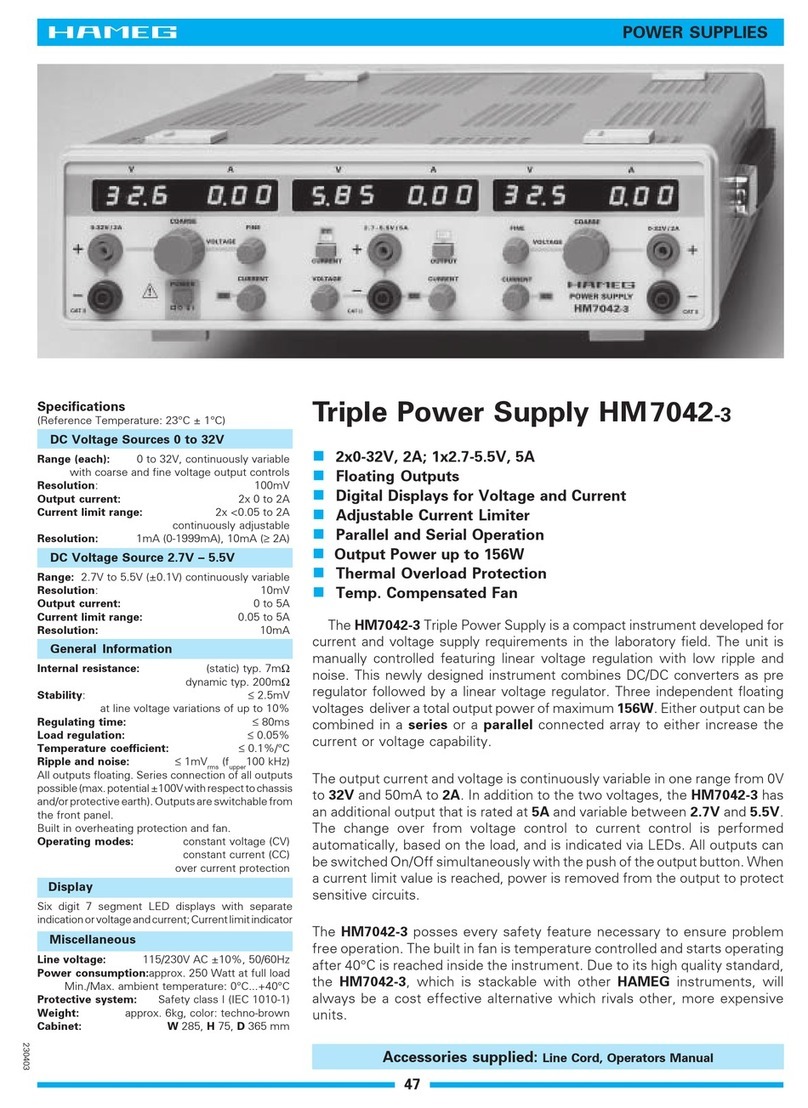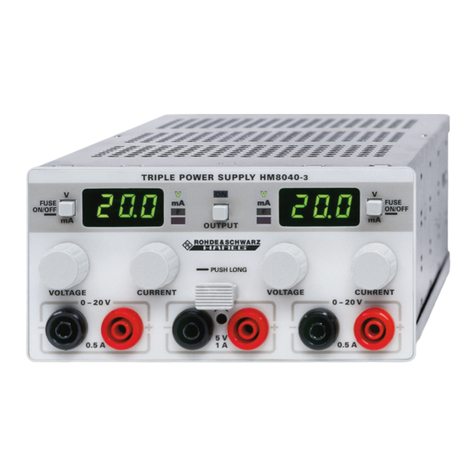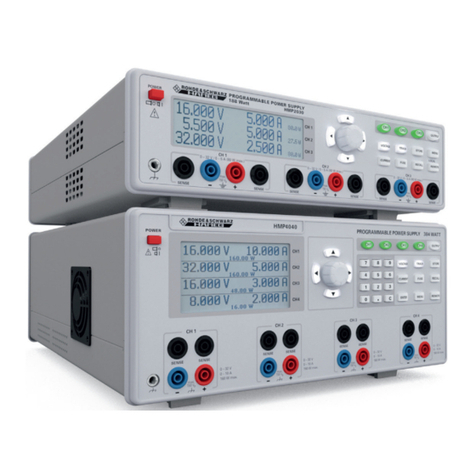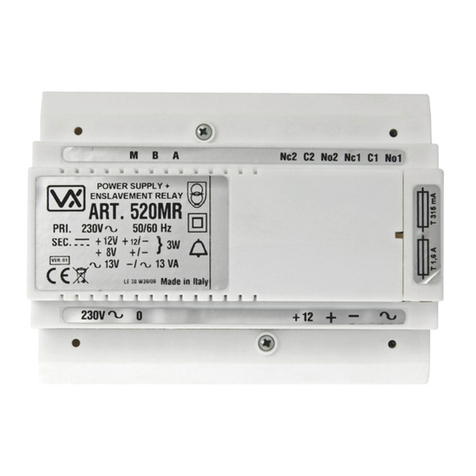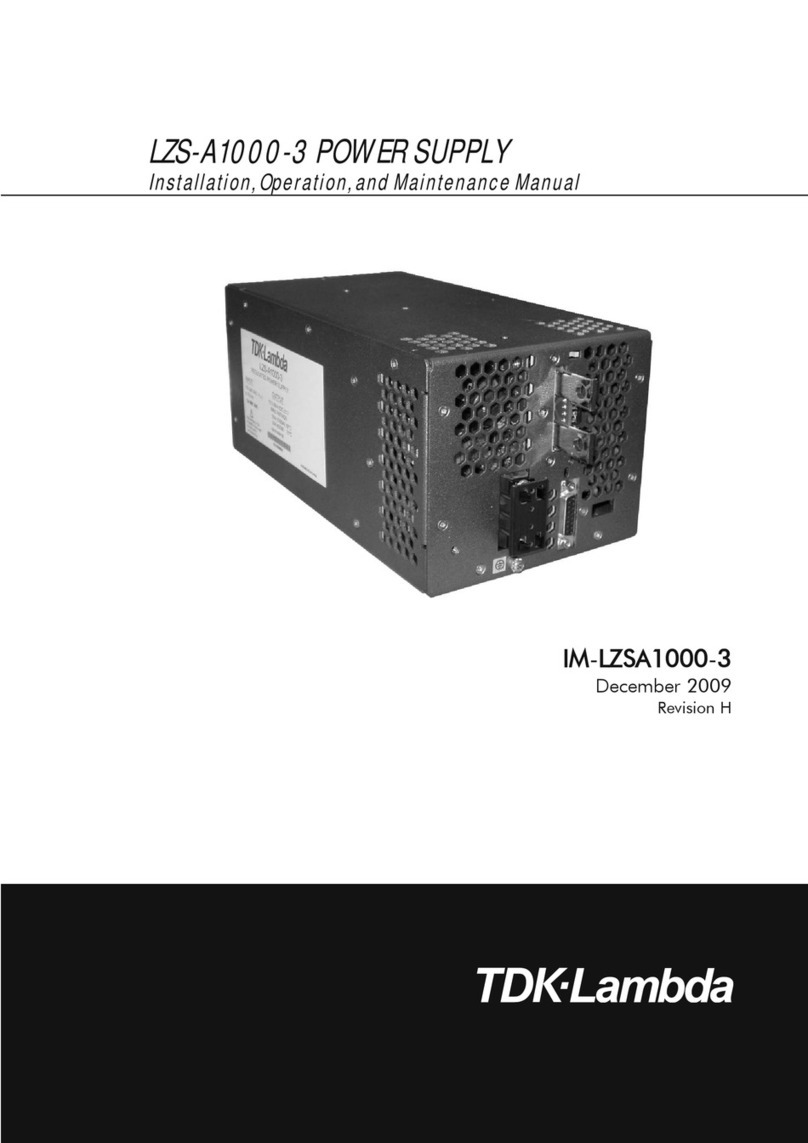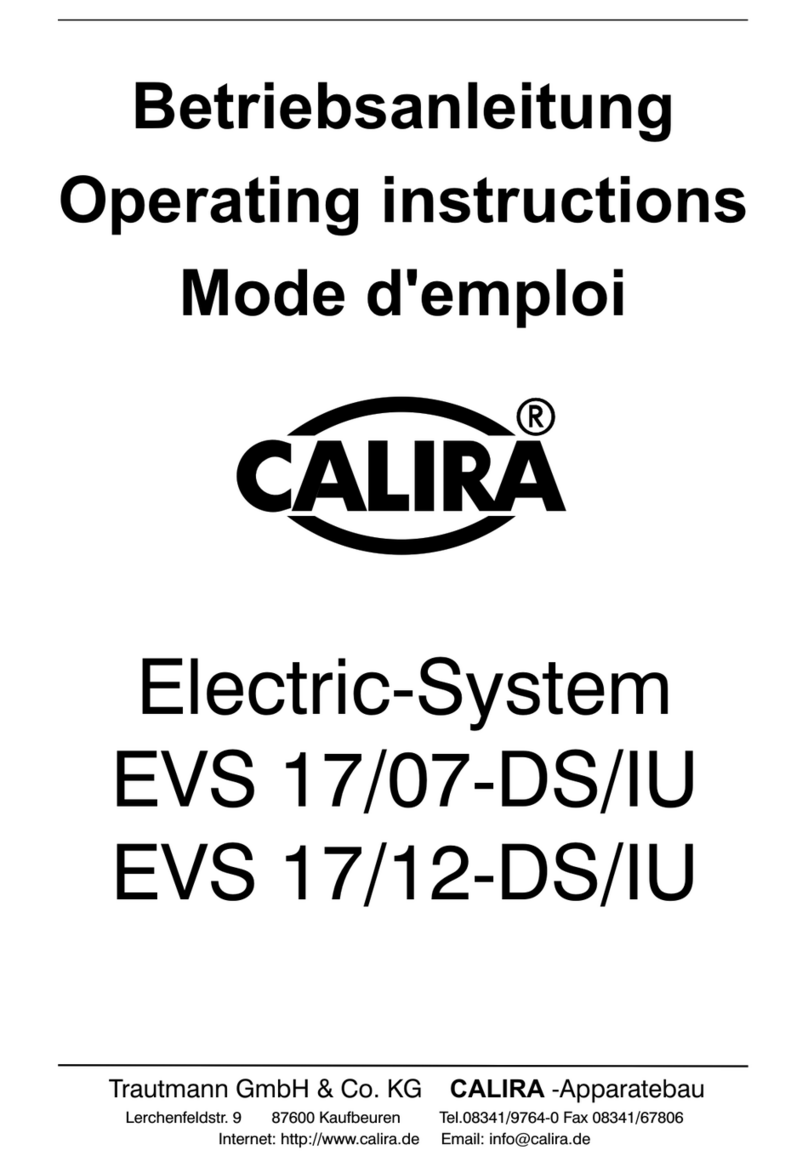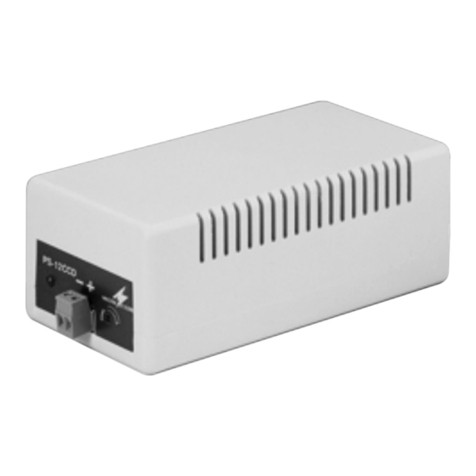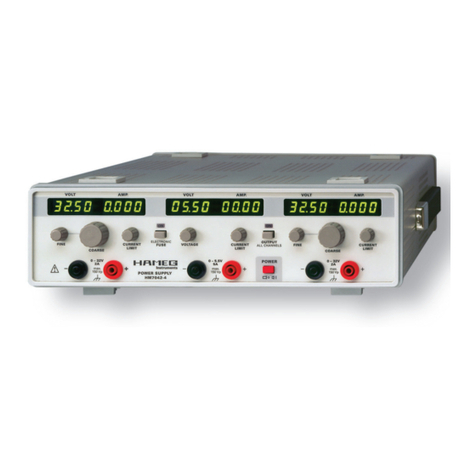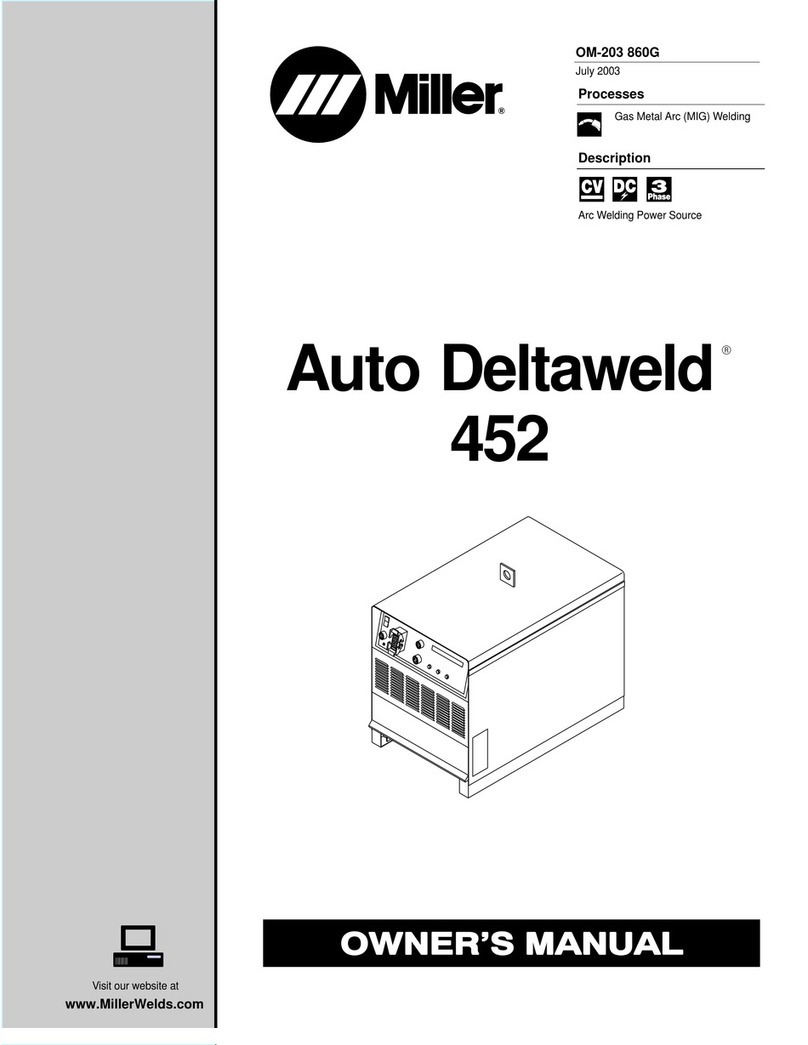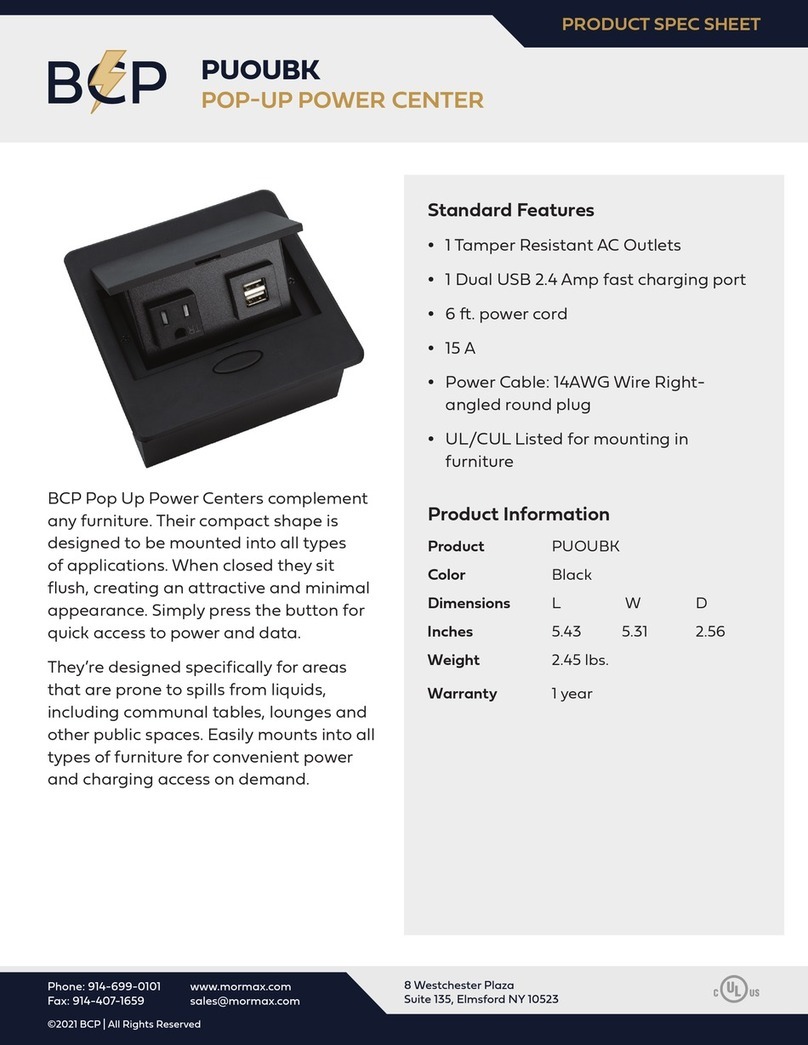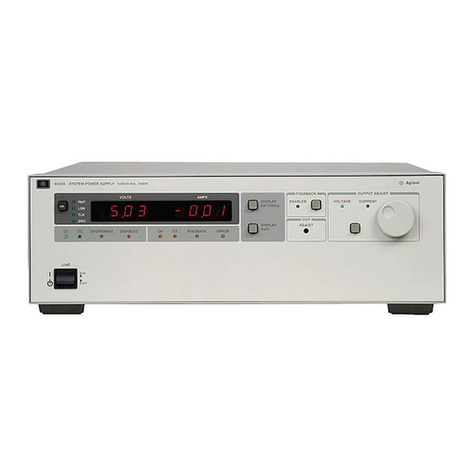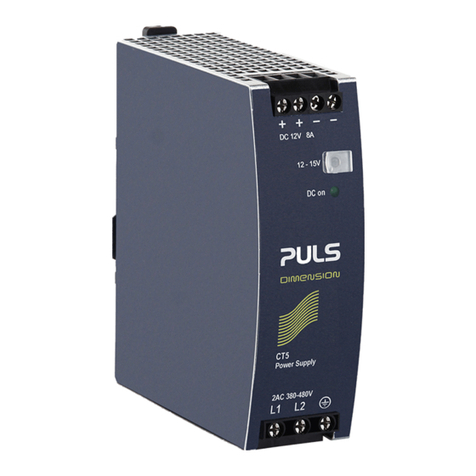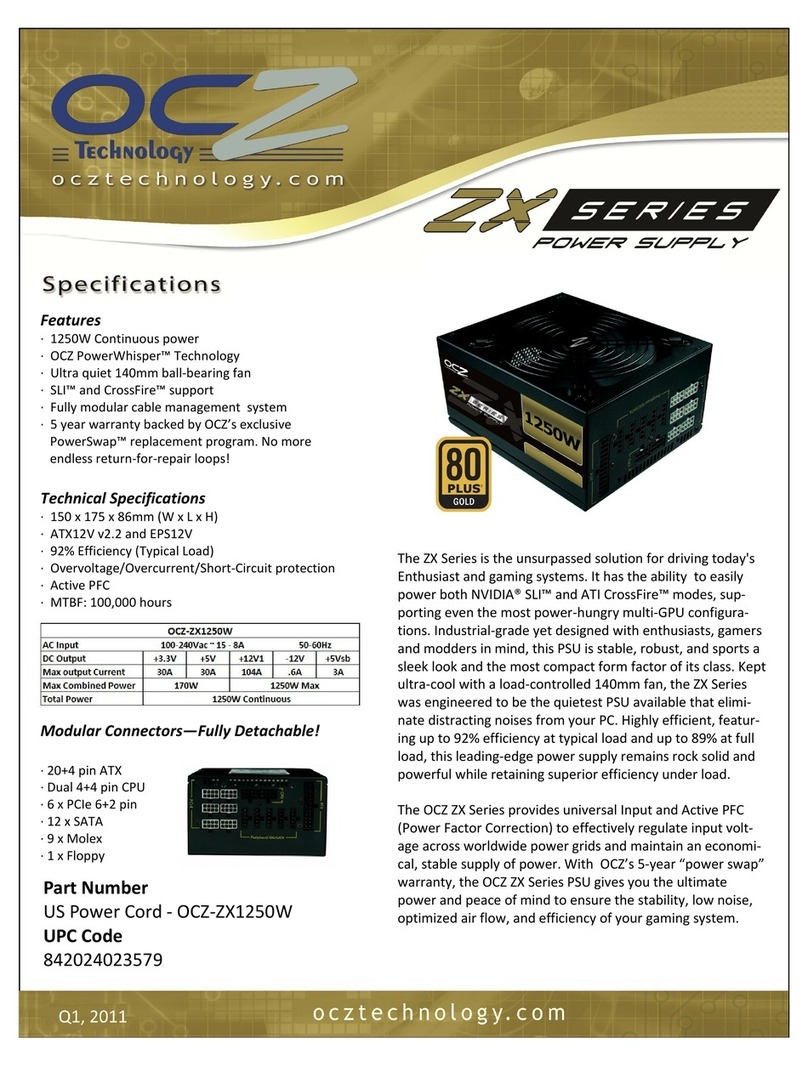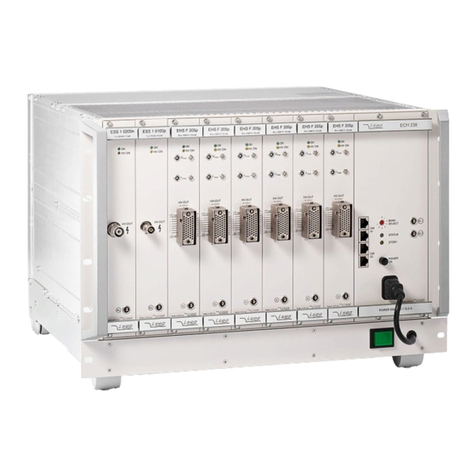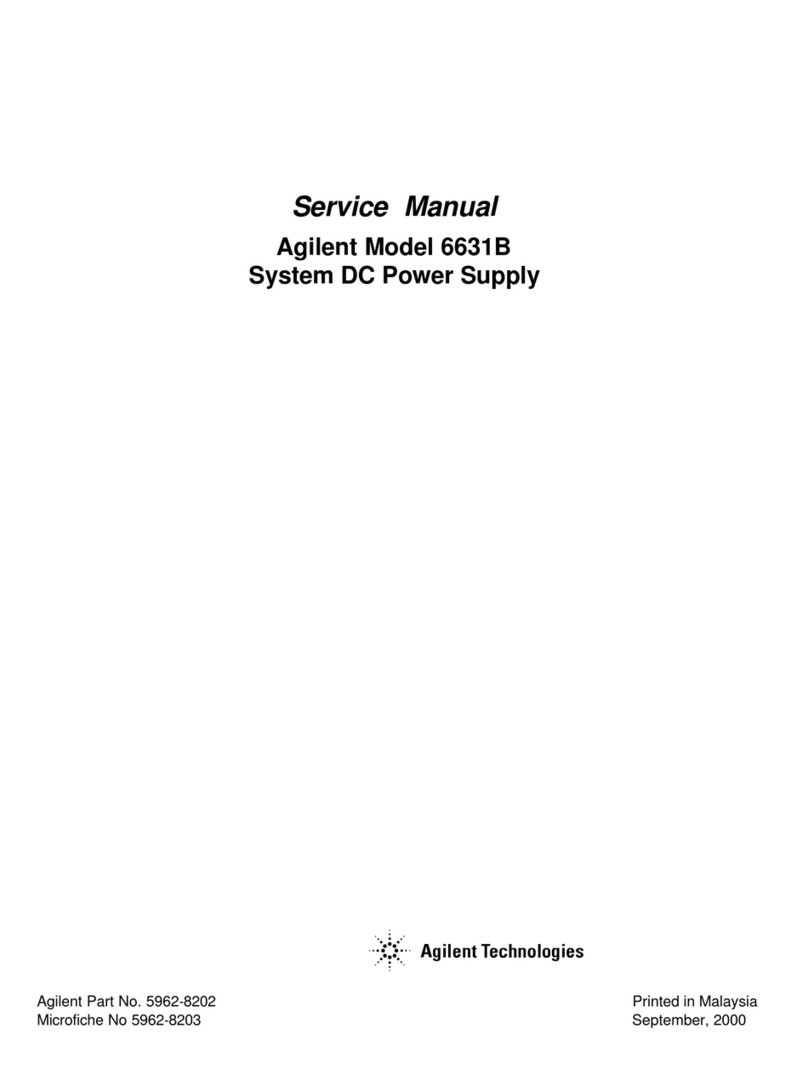
22 Subject to change without notice
3. Setting of the current limit
Current limiting means that a maximum current can be set.
This is e.g. useful in order to protect a sensitive test circuit. In
case of a short in the test circuit the current will be limited to
the value set which will (in most cases) prevent damage.
The picture shows that the output voltage Vout remains stable,
while the current Iout increases until the current limit selec-
ted Imax will be reached. At this moment the instrument will
change from constant voltage regulation to constant current
regu-lation. Any further load increase will cause the current
Iout to remain stable while the voltage Uout decreases ultimately
to zero.
If the current limit set is reached the red LIMIT LED glows
and indicates that the current regulation is active.
The current limit of the channels I–IV can be set with the
respective rotary control as well as with the numeric
keypad :
If the current limit of a channel shall be adjusted with the re-
spective rotary control, the A-LED has to glow. This setting
mode is activated by operating the A-button . By turning the
rotary control clockwise the current limit of this channel is
increased and a counterclockwise rotation decreases it. The
faster the rotary control is turned, the higher the increase of
the value of one revolution will be.
If the numeric keypad is used for parameter setting, the
changes of the current limit will be carried out for all selected
channels. Thereby several channels can be set at the same
time. After selcting the channels to be changed (the respective
CH.-LEDs are blinking), the required current limit can be
entered. The last entered figure can be deleted by operating the
DEL-button . The entry is finished by pushing the A-button
. If no channel is selected (all CH.-LEDs do not blink), all
channels will be set to the entered value.
Entered value Accepted value
3 3 mA
100 100 mA
0.3 300 mA
1.5 1.5 A
3.0 3.0 A
3000 3.0 A
Examples:
Setting up the current limit of all channels to 2 A:
– Push buttons 2 and A
Setting up the current limit of channels I and III to 0.1 A:
– Push button SEL
– Push buttons I and III
– Enter 0.1 and push button A
Electronic fuse
In order to provide a still better protection than current limiting
the HM7044 features an electronic fuse.
By operating the FUSE-button the fuse(s) can be set and
reset. With the selection mode the fuses of several channels
can be activated. If the fuse of a channel is set, this channel
will be disabled immediately as soon as the current limit is
reached. The respective FUSE LED glows if the fuse is
activated for this channel.
Tracking function
By means of the tracking function several channels can be
linked together. The output voltage as well as the electronic
fuse of the channels I – IV can be tracked.
Pushing the TRACK.-button the tracking mode is accessed.
The displays of the channels I – IV show respectively a figure
between 1 to 4 instead of the nominal values of the ouput volta-
ge and the current limit. The first row indicates the coupling of
the voltage setting and the second row indicates the coupling
of the electronic fuses of channels I – IV. The tracking mode
is left by pushing the TRACK.-button again.
The tracking function is active not until the same figure is
assigned to two or more channels. The figures can only be
changed with the respective rotary control . If the tracking
function is active the TRACK.-LED glows. For deactivating
the tracking function all figures have to be set back to their
original values. This is done automatically by operating the
DEL-button in the tracking mode.
Tracking - Voltage
For the coupling of the output voltage setting the first row of
the displays is relevant. The tracking function for the voltage
setting mode is acitve if at least the figures of two channels
were set to the same value. If the voltage of one of these chan-
nels is changed by the rotary control, the voltage of the linked
channels are changed automatically, too.
Example:
Tracking of channel I and II and additionally channel III and
IV:
Push the TRACK.-button . Adjust one of the following com-
binations by the rotary control .
channel I channel II channel III channel IV
1 1 2 2
1 1 3 3
2 2 1 1
2 2 3 3 etc.
Push the TRACK.-button .
Chance the voltages with the rotary controls .
Tracking - electronic fuse
If overcurrent occurs at one channel and if the electronic fuse
of this channel is activated, all channels are disabled, which
are linked with this one.
If the channels I, II and III are linked together, for example, and
the electronic fuse is activated for channel I and II, an over-
current (e.g. short circuit) at channel III has no consequences
for the channels linked with this one. But an overcurrent at
channel I or II will disable the channels I, II and III.
Setting the parameters
Iout
Uout
Uconst
Imax
Adjustment of current
Adjustment of voltage
